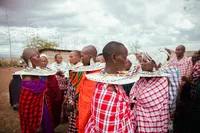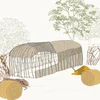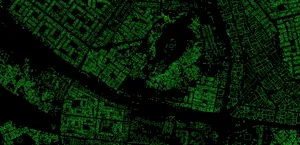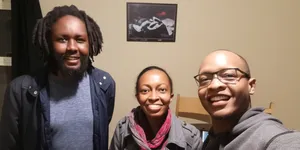A spotlight on the Maasai community on Google Arts & Culture

From the iconic red of their Shuka cloth, to their ‘adumu’ dance ritual (a dance form that involves a lot of jumping performed by the Maasai Moran warriors), the Maasai community has lived in East Africa for hundreds of years. This nomadic group lives from the earth: drawing on readily available materials and indigenous technology to construct their homes and livelihoods. People from all over the world have been curious to explore their way of living, their ritual and traditions, and possibly been influenced by their global fashion.
I’d like to congratulate the National Museums of Kenya and Project Fuel, a non-profit working with local communities,for this new and exciting project on Google Arts & Culture called ‘Maasai: Wisdom of a Community’. I invite you to take a look inside the community and lifestyle by exploring more than 430+ high resolution images, 29 illustrations, and 55+ expertly curated exhibits.
The exhibition walks you through 5 ways you can get to know more about the Maasai community:
The Maa language
The Maasai are a culturally rich community and the name Maasai means ‘people who speak Maa’ which is their native language. Maa is an Eastern Nilotic language spoken by the Maasai community. Learn to speak and count in Maa through audio-narrated stories that guide you through.
Enganit in Maa language means respect.

Eco-living the Maasai way
Sustainability is key when it comes to our everyday lives and environment. The practices for constructing buildings in the Maasai land are characterised by the resources available and have been passed down through generations. The Maasai also construct structures and settlements revolving around their livestock. The size of the settlements vary according to the number of humans and livestock housed within the settlement. Learn more about the sustainable architecture practices of the Maasai community.
Animated Maasai dwelling under construction

Jewellery and adornments
The Maasai are famous for their statement jewellery and adornments. They wear jewellery that has been skillfully crafted and created through beadwork. Maasai beadwork is a cultural practice with great importance and symbolism for the community. Each of the patterns and colours used in the jewellery pays homage to the tradition and belief system of the Maasai community. Learn more about the symbolism behind the colours and patterns of Maasai jewellery and the history and materials of Maasai jewellery.
The colours of Maasai beadwork

Historical folktales and legends
Ancient folktales and stories of legends inform current Maasai beliefs. These folktales bear important history in Maasai culture, and are stories that have been passed down through many generations. You can learn more about some of these folktales with exhibits about The Maasai Legend of the Gift of Cattle, The Maasai Legend of the Girls of the Knee, and Engai: The God of the Maasai, amongst many other stories.
The origin of cattles, Maasai folktale

Maasai Life: Then and now
The Maasai are known for their proud identity and long-preserved culture. However, over the past few decades, with the influence of technology, health interventions, and interactions with people from different cultures, a lot of changes have been adapted to Maasai society. Through first hand interviews, find out about how these changes have been implemented in the lives of members of the community.
Tech Savvy Maasai Young Woman by Vibhor Yadav

I invite you to discover more about the Maasai in East Africa from the dedicated hub on Google Arts & Culture or download Google Arts & Culture’s Android or iOS app to learn about historical Maasai warriors, Senteu, Mbatian, and Lenana. Once again, this partnership between National Museums of Kenya, Project Fuel and Google Arts & Culture is a critical move towards preserving the culture of our people and our continent.






